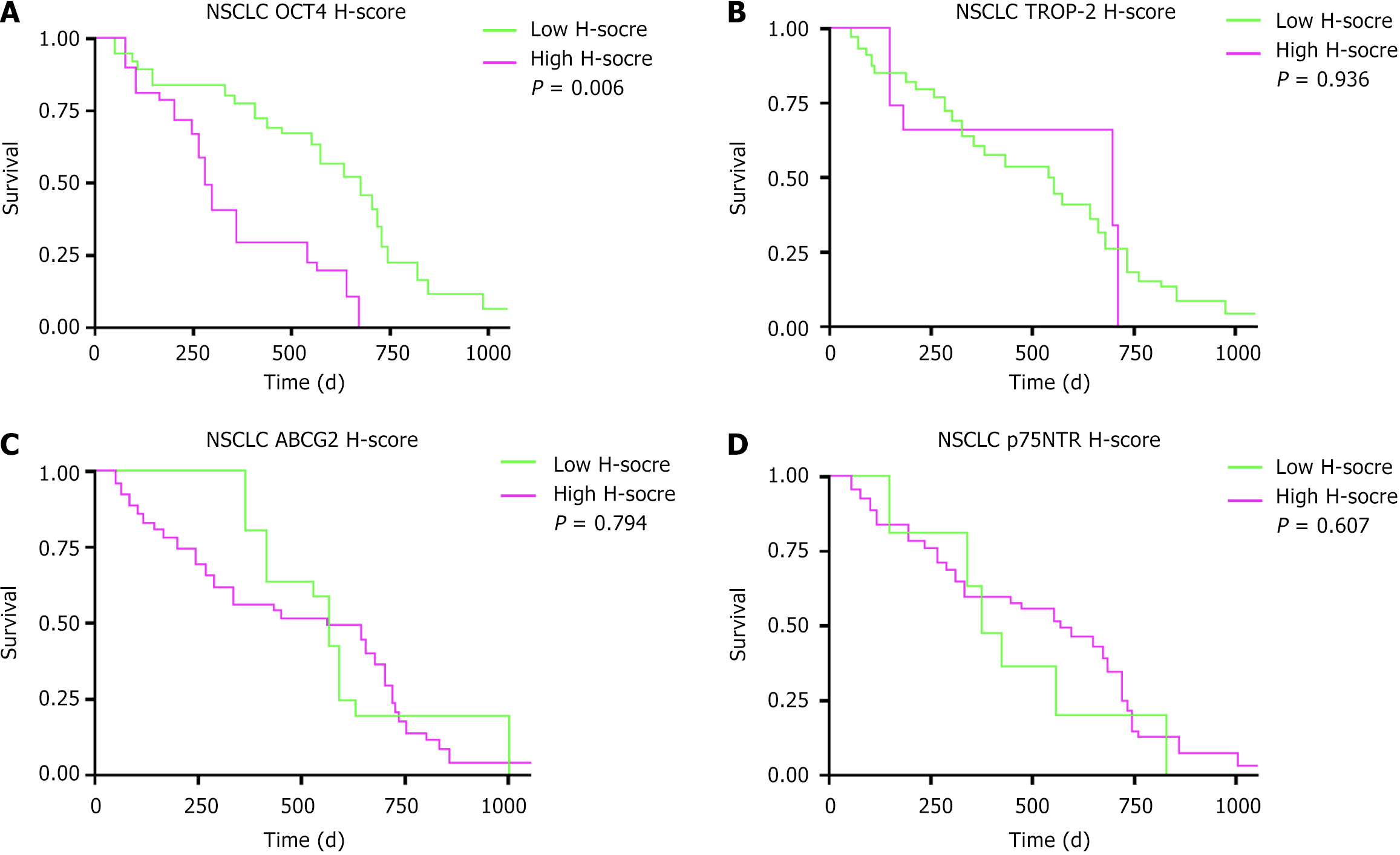Copyright
©The Author(s) 2025.
World J Stem Cells. Sep 26, 2025; 17(9): 106381
Published online Sep 26, 2025. doi: 10.4252/wjsc.v17.i9.106381
Published online Sep 26, 2025. doi: 10.4252/wjsc.v17.i9.106381
Figure 1 Relationships between octamer-binding transcription factor 4 H-score, trophoblast cell surface antigen-2 H-score, ATP-binding cassette subfamily G member 2 H-score, and p75 neurotrophin receptor H-score and overall survival.
A: Relationship between octamer-binding transcription factor 4 H-score and overall survival (OS); B: Relationship between trophoblast cell surface antigen-2 H-score and OS; C: Relationship between ATP-binding cassette subfamily G member 2 H-score and OS; D: Relationship between p75 neurotrophin receptor H-score and OS. NSCLC: Non-small cell lung cancer; OCT4: Octamer-binding transcription factor 4; TROP-2: Trophoblast cell surface antigen-2; ABCG2: ATP-binding cassette subfamily G member 2; p75NTR: P75 neurotrophin receptor.
Figure 2 Association between high octamer-binding transcription factor 4 expression and overall survival in different non-small cell lung cancer subtypes.
A: Lung squamous cell carcinoma; B: Lung adenocarcinoma. LUSC: Lung squamous cell carcinoma; OCT4: Octamer-binding transcription factor 4; LUAD: Lung adenocarcinoma.
- Citation: Lin T, Jiang SC, He XM, Xu WZ, Jin CJ, Guo YD. Expression of cancer stem cell markers and their prognostic significance in stage IIIA non-small cell lung cancer. World J Stem Cells 2025; 17(9): 106381
- URL: https://www.wjgnet.com/1948-0210/full/v17/i9/106381.htm
- DOI: https://dx.doi.org/10.4252/wjsc.v17.i9.106381














